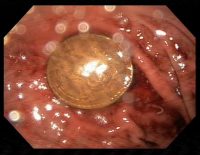Know everything about Plasma Therapy – the ‘Sanjivini Booti’ for Covid-19 from Interventional Cardiologist and Educator Dr. Tarun

With no definite treatment and vaccine available to treat covid-19 infection, physicians are trying whatever best option available them. CPT efficacy in treating viral infection leads to its widespread use across the globe.
Convalescent Plasma therapy (CPT) is based on a simple premise. The blood of people who have recovered from an infection contains antibodies. Antibodies are molecules that have learned to recognize and fight the pathogens, such as viruses, that have caused disease. Doctors can separate plasma, one of the blood components that contain such antibodies, and administer it to people whose bodies are currently fighting infectious disease. This can help their immune systems reject the pathogen more efficiently.
Therapy that has been used for over 100 years
The notion of plasma therapy was first introduced in the late 19th century when physiologist Emil von Behring and bacteriologist Kitasato Shibasaburou discovered that they could use antibodies present in serum — another blood component — to fight the bacterial infection diptheria. “In fact, the first Noble Prize was given [to Behring] for the use of serum to treat diphtheria. Since then, doctors have used passive antibody therapy, on and off, at least since the 1930s to treat or prevent both bacterial and infection. CPT use has been well documented during the outbreak of many diseases at various periods, including spanish Influenza A (H1N1) infections in 1915 to 1917, severe acute respiratory syndrome (SARS) in 2003, pandemic 2009 influenza A (H1N1), avian influenza A (H5N1), several hemorrhagic fevers such as Ebola and other viral infections.
Corona pandemic has spread across nearly 213 countries across the globe and till now affected nearly 11.2 million persons and 528000 deaths worldwide. With no definite treatment and vaccine available to treat covid-19 infection, physicians are trying whatever best option available them. CPT efficacy in treating viral infection leads to its widespread use across the globe.
Hopes and Worries Ahead
Worries are related to transfusion reactions and it may not be effective if administered too late in the course of the disease. As some studies from Wuhan, China during early phase of pandemic reported that this therapy may not be effective if given in patients with severe and life threatening infection.
However, recently published data by Mayo clinical proceedings (USA) in 20000 patients who received Convalescent plasma From April 3 to June 2, 2020 provide robust evidence that transfusion of convalescent plasma is safe in hospitalized patients with COVID-19, and support the notion that earlier administration of plasma within the clinical course of COVID-19 is more likely to reduce mortality.
Following these foot-steps India also started using plasma therapy in random cases since April. The first documented case was a 49-year-old critically ill patient admitted at Max Saket ,Delhi who received CPT as a side-line to standard treatment protocols on the night of April 14 on compassionate grounds. Since then CPT usage grown in leaps and bound and gained the confidence of physicians across the country. Health minister of Delhi and many other high profile cases received CPT and recovered leading to setting up of plasma banks in Delhi and Mumbai.
Sooner than Later- “Often, physicians are using the plasma on patients that are very ill, and we don’t really know whether that’s going to be as effective as if you gave it early in the course of the disease.”But getting this treatment to the patients who need it sooner rather than later is not always straightforward. “Because let’s say the doctor orders plasma and people are getting worse. It sometimes takes a while for the plasma to arrive. Some hospitals have it on-site, others have to get it from blood banking centers.”
Vaccine/ CPT-
Unlike with vaccines, whose development takes time, or experimental medication, which needs to go through several different stages of testing before it can obtain formal approval, this approach allows doctors to use what is already there — the blood of those who have recovered from the illness — to treat hospitalized patients. But while vaccine also operate on the premise of stimulating a person’s immune system to block or kill the virus, they do not use “readymade” antibodies, and testing them for safety and efficacy could take more time.

“When you get plasma, someone else is giving you the antibodies, and you get them immediately.”
CPT- CPT may be considered in patients with moderate disease who are not improving (oxygen requirement is progressively increasing) despite the use of steroids. Special prerequisite for CPT use include-
(1) ABO compatibility and cross-matching of donor plasma
(2) The neutralising titer of donor plasma should be above the specific threshold or plasma IgG titer (against S-protein RBD) above 1:640
(3) Should be avoided in patients with IgA deficiency or immunoglobulin deficiency
(4) The recipient should be closely observed for several hours post-transfusion
Dose- Dose is variable ranging from 4 to 13 ml/kg (usually 200 ml single-dose plasma given slowly over not less than 2 hours. In literature, Bin Zhang et al reported a maximum of 2400 mL of convalescent plasma administered to a 73 years old male patient.
Who Can Donate Plasma
According to the US Food and Drug Administration (FDA), people who have fully recovered from the SARS-CoV-2 virus infection for at least two weeks can donate plasma. Individuals must have had a prior diagnosis of COVID-19 documented by a laboratory test while also meeting other donor criteria.
A person may be able to donate plasma if:
(1) Recovered Completely from documented COVID-19 infection and have been symptom free for 14 days
(2) Weight >50 kg
(2) Age -18- 60 years
(3) Adequate Haemoglobin
A person must not donate plasma if he/she:
(1) HIV positive
(2) A carrier of hepatitis B or hepatitis C or any active infections
(3) Uncontrolled Diabetics or hypertension
(4)Pregnant females
(5) Cancer patients
(6) Chronic kidney/Heart /Lung disease
Conclusion
There is a compelling need to control the greatest global health crisis by COVID‐19 outbreak. Based on the consolidated clinical data derived from the studies, in addition to antiviral/antimicrobial drugs, CPT could be an effective therapeutic option with promising evidence on safety, improvement of clinical symptoms, and reduced mortality.
Dr.Tarun Kumar, MD, DM, FSCAI, FESC, and VCP (Mayo clinic) is an Interventional cardiologist and Educator

 (10 votes, average: 4.60 out of 5)
(10 votes, average: 4.60 out of 5)






Comments